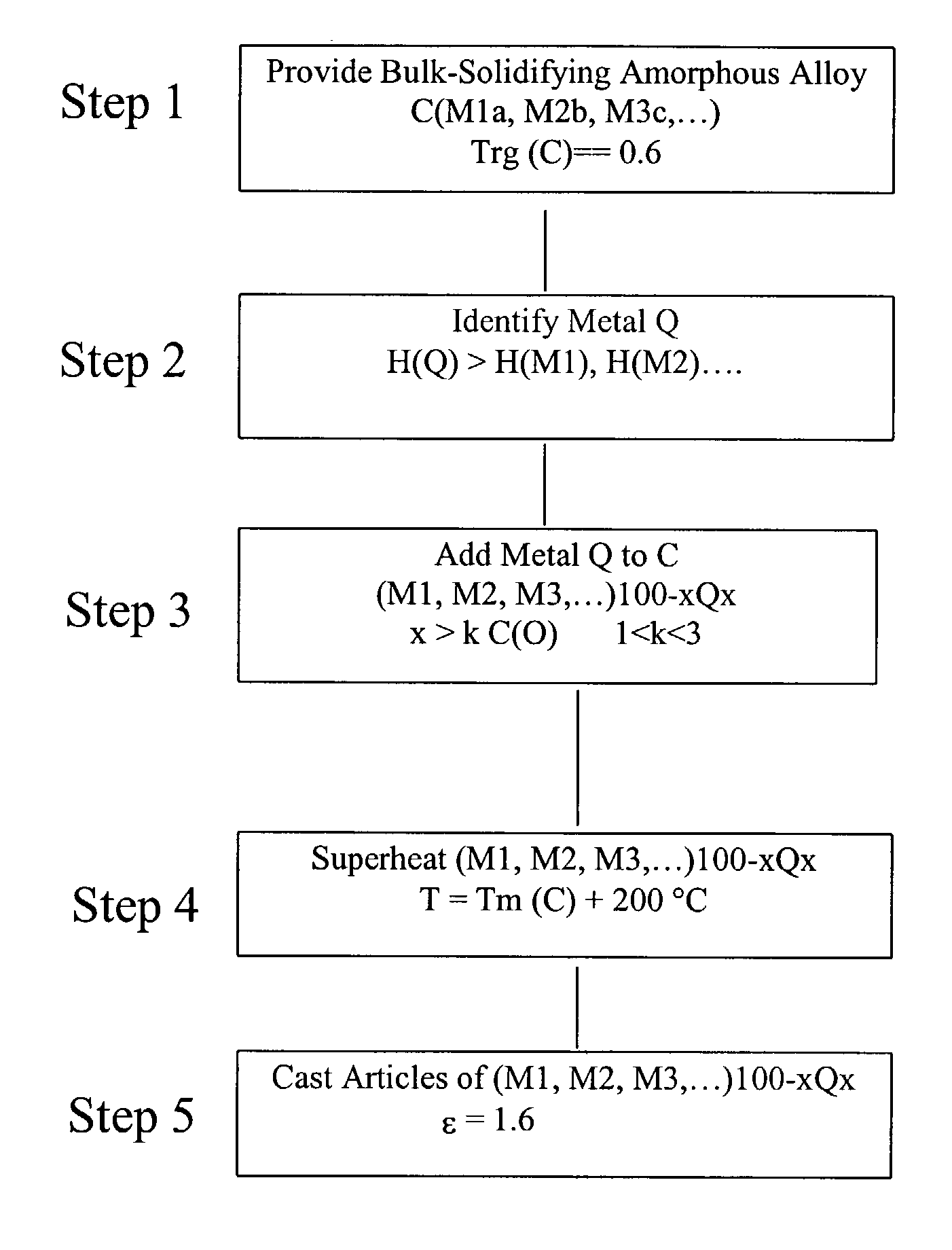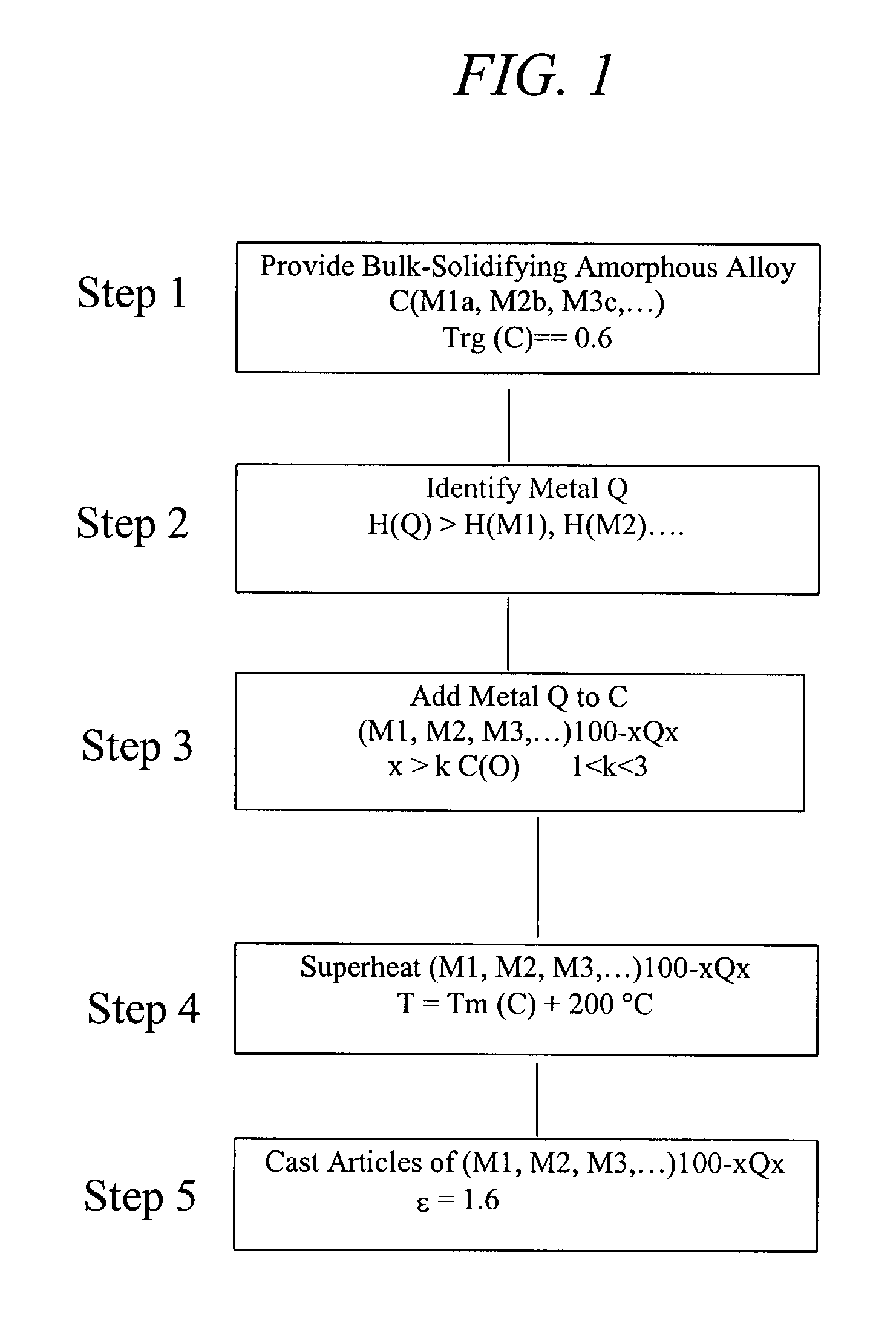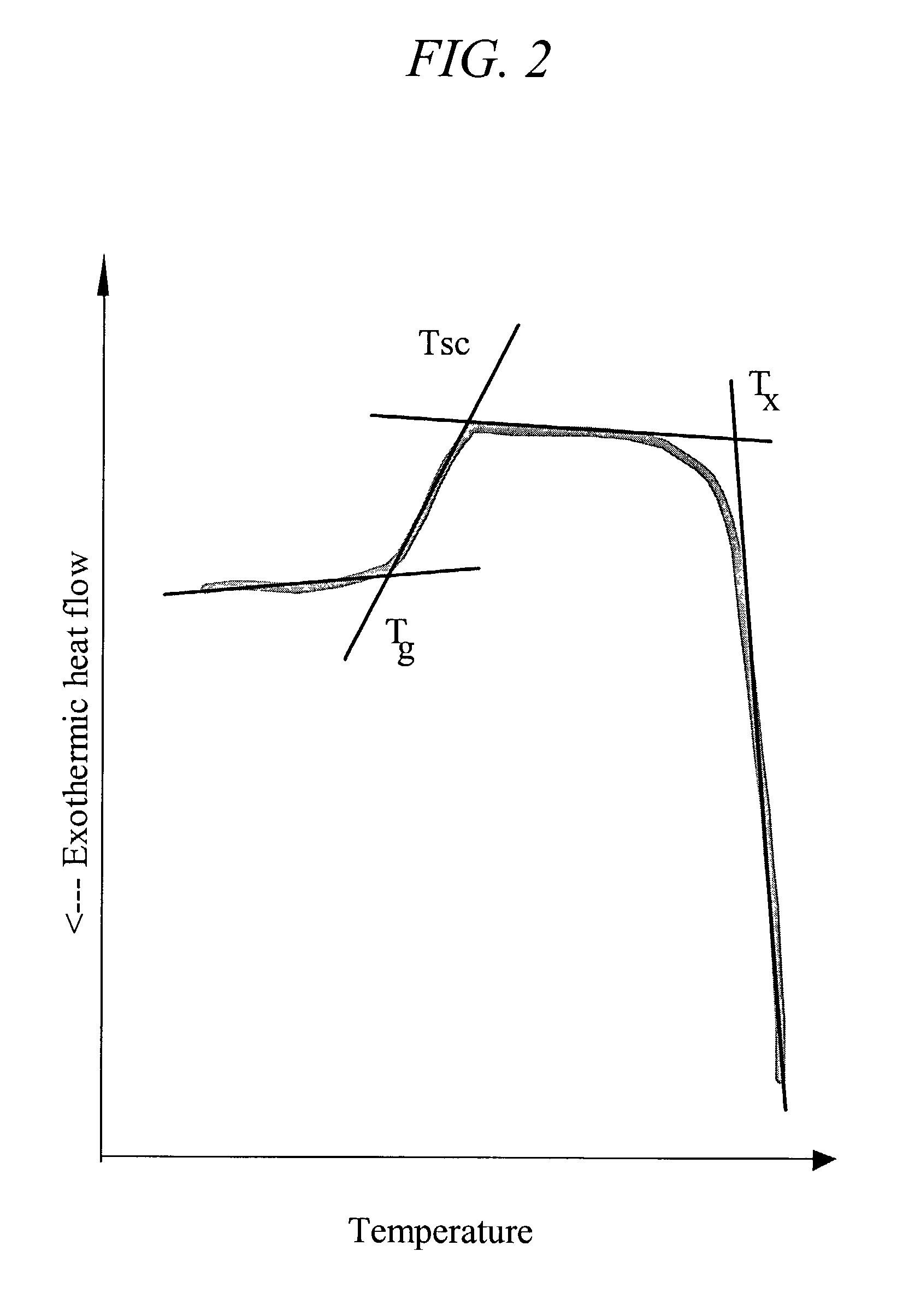Method of improving bulk-solidifying amorphous alloy compositions and cast articles made of the same
a technology of amorphous alloys and compositions, which is applied in the field can solve the problems of increasing the critical cooling rate of these materials, increasing the cost of articles made of bulk-solidifying amorphous alloys, and increasing the nucleation rate of crystals. achieve the effect of improving bulk-solidifying amorphous alloy compositions
- Summary
- Abstract
- Description
- Claims
- Application Information
AI Technical Summary
Benefits of technology
Problems solved by technology
Method used
Image
Examples
Embodiment Construction
[0018]The present invention is directed to improved bulk-solidifying amorphous alloy compositions having an additional alloying metal in the amorphous alloy mix and improved methods of forming such compositions.
[0019]As shown in FIG. 1, in Step 1 of one embodiment, a bulk-solidifying amorphous alloy “C” with metal components M1, M2, M3, etc. having a ratio of glass transition temperature to melting temperature, or reduced glass transition temperature, Trg, of more than about 0.5, preferably more than about 0.55, and most preferably more than about 0.6, is provided, where the composition is of the bulk-solidifying amorphous alloy is given by M1aM2bM3c, etc., where the subscripts a, b, c, etc. denote the atomic percentages of the respective metal components M1, M2, M3, etc.
[0020]In the above discussion it is to be understood that Tg is determined from standard DSC (Differential Scanning Calorimetry) scans at 20° C. / min as shown in FIG. 2. Tg is defined as the onset temperature of glas...
PUM
| Property | Measurement | Unit |
|---|---|---|
| melting temperature | aaaaa | aaaaa |
| melting temperature | aaaaa | aaaaa |
| thicknesses | aaaaa | aaaaa |
Abstract
Description
Claims
Application Information
 Login to View More
Login to View More - R&D
- Intellectual Property
- Life Sciences
- Materials
- Tech Scout
- Unparalleled Data Quality
- Higher Quality Content
- 60% Fewer Hallucinations
Browse by: Latest US Patents, China's latest patents, Technical Efficacy Thesaurus, Application Domain, Technology Topic, Popular Technical Reports.
© 2025 PatSnap. All rights reserved.Legal|Privacy policy|Modern Slavery Act Transparency Statement|Sitemap|About US| Contact US: help@patsnap.com



